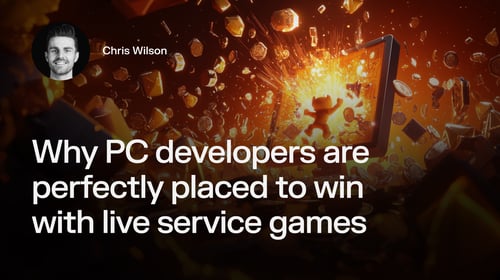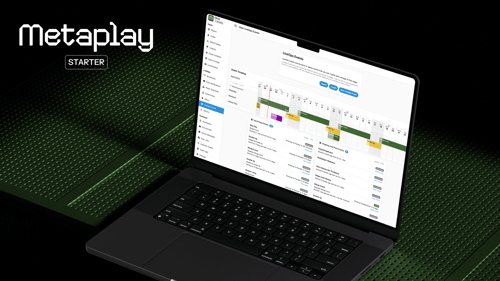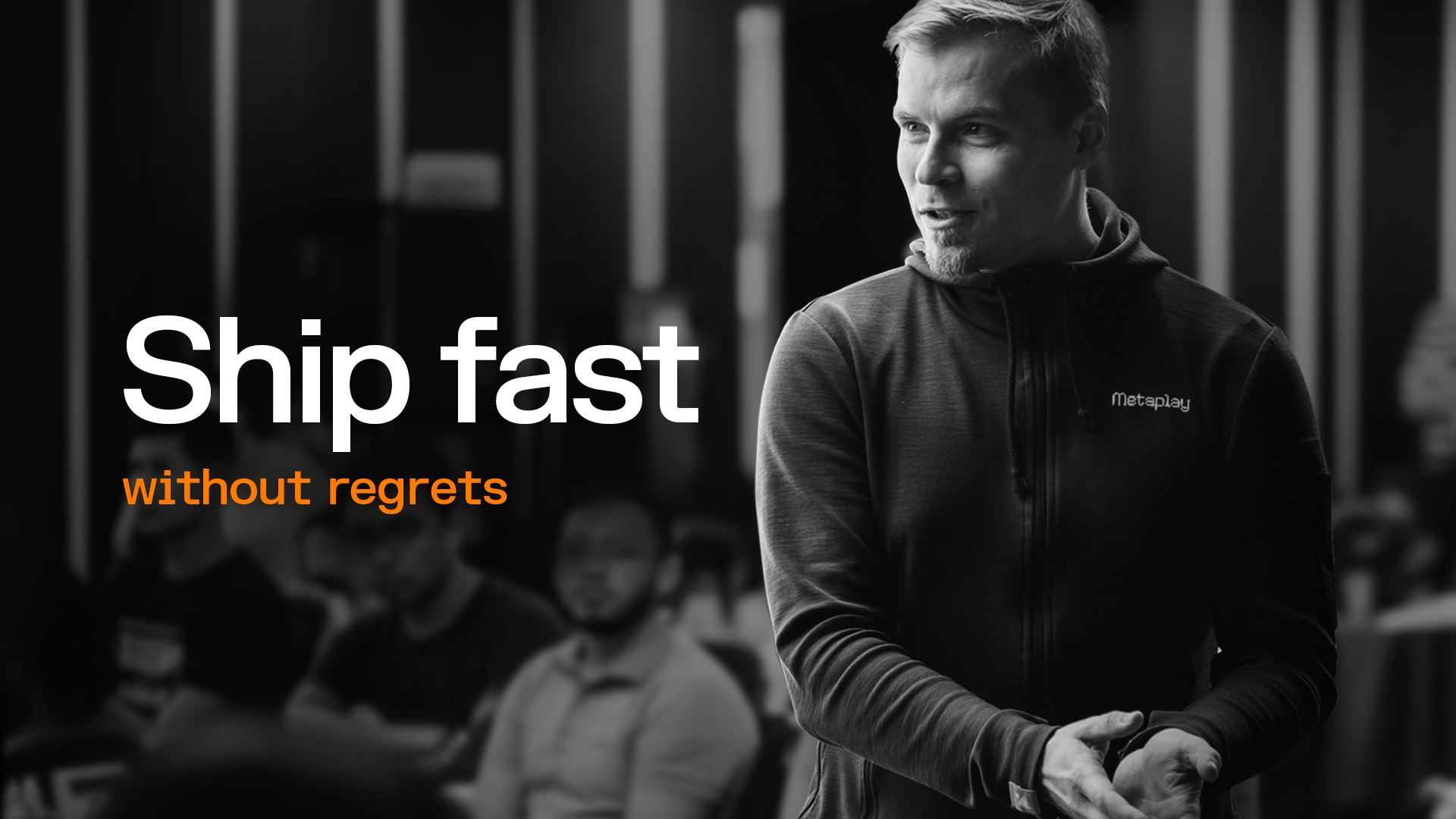
Ship fast without regret: Lessons from 15 years in mobile gaming

Teemu Haila •
How to avoid the critical mistakes studios make when launching games.
For such a sophisticated industry, it’s ironic that the single biggest mistake I see young gaming studios make is so simple: failing to plan ahead.
Instead of building or choosing a backend tool that offers functionalities needed by games with hundreds of millions of users, they choose one that ticks the boxes for the feature specs and technological infrastructure required in the initial stages of the game’s life only.
Then the game begins to scale and the studio realizes that their backend tech doesn’t support their future roadmap - the one that will catapult them into the top grossing charts. And they’re left with a set of major obstacles.
Below, I explain how launching a game with a short-term mindset - even though that is often encouraged in this industry - can be detrimental to its long-term success and cause avoidable headaches further down the line.
Short-term decisions, long-term implications
The pressure to ship a new game quickly is felt by all studios in 2023. In the game’s first stage, the team needs to build an MVP, soft launch, run data analysis to see if there’s a product-market fit, then deepen the game’s core loop and features. All in the space of around 6-12 months, depending on their budget.
The issue with this pressure is that it tends to cloud a studio’s long-term vision.
The three stages of a F2P game
To understand the problems brought on by short-term decision making for a game’s backend, let’s unpack the lifecycle of a successful F2P title.
From zero to one

In the first phase, concept validation is the name of the game. The team’s development focuses on the next year’s needs at best, choosing basic functionalities.
This typically means games are developed in editor rather than making slower device builds; offline gameplay will be prioritized while multiplayer action will be faked; game design will consist of pre-made features; and anything ‘extra’ will be avoided.
From a technical standpoint, this means launching a basic prototype is fairly straightforward. It involves building the game logic, connecting this to game analytics and game services (like in-app purchases), and building a database. Experienced developers can put this together using off-the-shelf tools in just 4 months.
At this stage, it ticks the boxes. However, if all goes well - the game concept has been validated and VC funding has poured in - the game moves into a new stage of existence. Let's call it the scale-up phase.
The scale-up phase

In the scaleup phase the tech requirements are very different, needing to support a game with millions of players. New functions to build include cheat-proof logic, scalability to enable millions of players without crashing, multiple deployments of the game running for different departments in the studio, and DevOps to facilitate live environments.
That’s just the tech - on the game design and product side, they have to build out customer support functions, LiveOps tools, feature documentation, localization for different audiences, over-the-air (OTA) updates, and of course ensure all features are on par with the rest of the top 100 grossing games to stay competitive.
While to some extent, this is possible using the default backend solutions typically chosen from day one (although things get messy and scrappy pretty quickly), the major headaches arrive when the game enters the next phase.
The unicorn phase
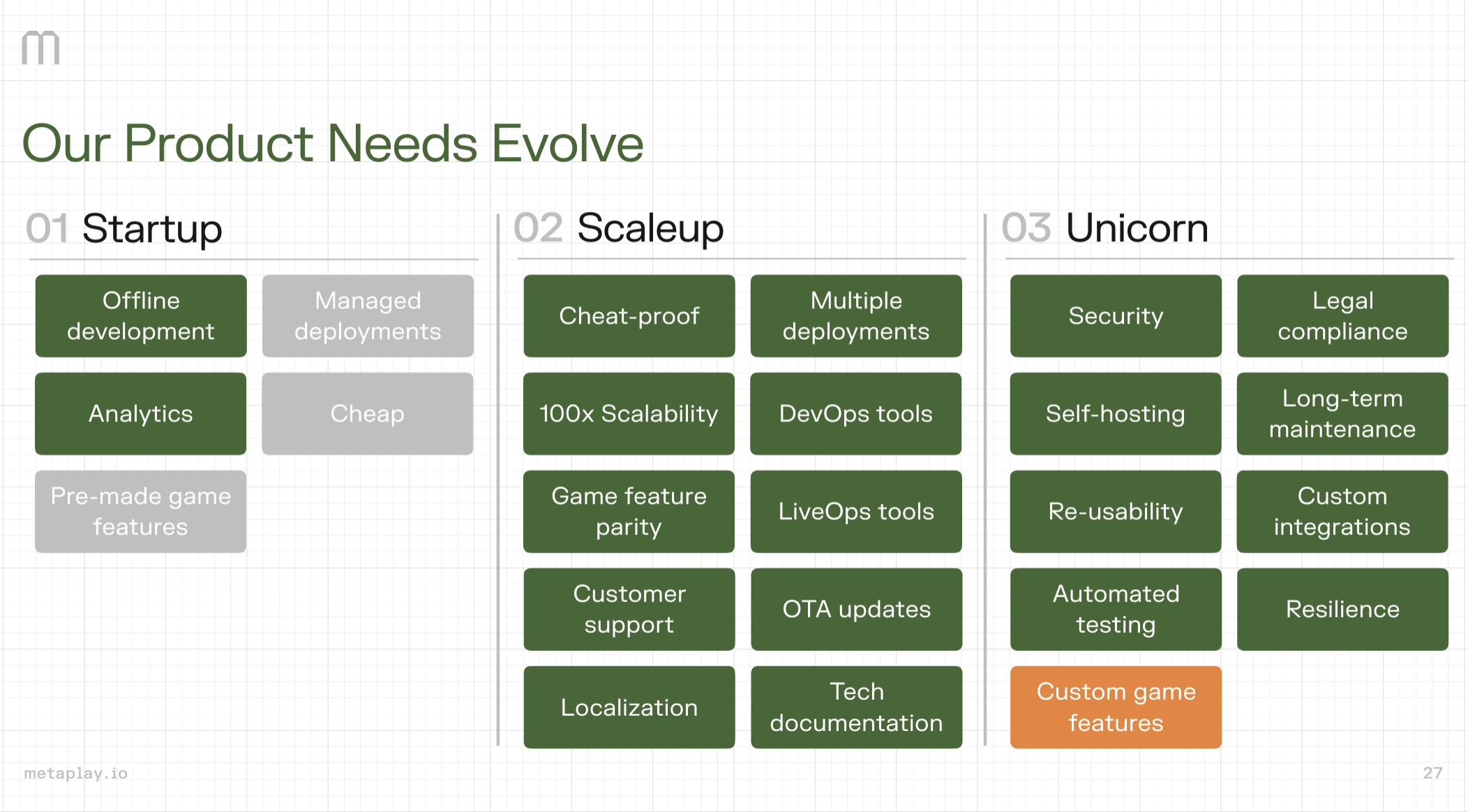
For the few games that break into the hundreds of millions (or even billions) of players league, the tech and design requirements become even more demanding.
Legal compliance, security against hacks, tech documentation, integrating in-house analytics, and general maintenance are just a few of the requirements.
On the design side, meanwhile, if in the scaleup phase the goal was feature parity with the other top grossing games, the priority in the unicorn phase is feature innovation.
But how is this all related to the short-term thinking I called out at the start?
The impact of shipping a game without a tech upgrade path
When the time comes to truly scale and innovate, to become the next Supercell or Moon Active, the ramifications of shipping a game without a tech upgrade path are far-reaching. For instance:
1. Your game design becomes limited by available tech features
When the need to stand out from competition arises, game designers may come up with great ideas for new social features or LiveOps functions. However, due to the tech limitations brought on by a sub-par tech backend, the product team will struggle to execute and most likely push back on the concepts. This stifles growth and innovation.
2. Your tech stack diverges into inflexible micro services
At a certain point, it’s impossible to continue building on top of the existing tech stack. This often leads to the creation of a web of microservices, which causes confusion and inefficiency among development teams.
As a result, it can be almost impossible to troubleshoot bugs in the game, which can lead to increased downtime, and ultimately decreased revenue.
3. Your team spends increasing amount of time maintaining legacy systems
Existing, outdated systems drain resources as games seek to innovate. For example, LiveOps specialists might want to create a new leaderboard or guild feature, but the backend technology doesn’t offer the capability to do so.
As a result, time-consuming new systems must be built to sit alongside the old ones, creating a messy tech stack and sub-optimal operations in development teams.
These are just a few potential symptoms of choosing a backend solution tailored for the short-term when launching a game.
Tips for shipping without regret
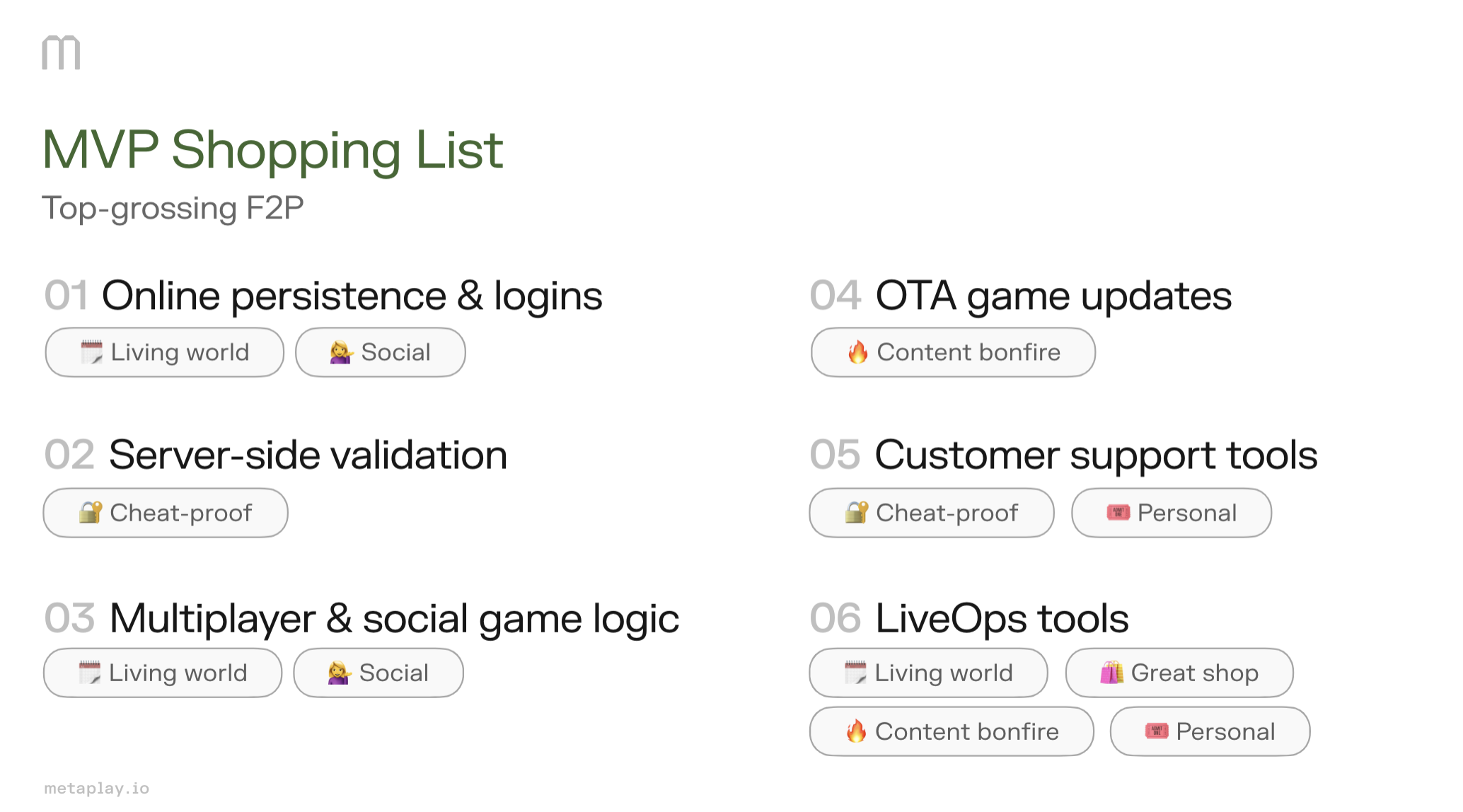
So what aspects of a top-grossing free-to-play game does a developer need to lay the foundations for from the start?
-
Game configs (over-the-air game updates, AB-testing, Google Sheets),
-
Cheat-proof game logic (command pattern, mirrored execution),
-
Customer support tools (in-game mails, dashboards, accounts, permissions),
-
Legal compliance (GDPR, backups, security)
-
LiveOps tools to keep the game exciting and maximize player retention and LTV.
Don’t get me wrong - I’m not arguing games need to actually build out all of these functionalities from day one. That would take years.
My point is that they need to at least prepare for them by ensuring the tech capabilities are there as and when they’re needed.
Failing to lay these foundations from the start creates the need to carry out a major refactor of the backend code when it's time to grow from the mid-level tier to the top 100 grossing hits.
And code refactors take significant time and investment at a time when real high impact work - such as building out and optimizing innovative new social features in your game - should be the priority.
Metaplay: The backend solution of choice for ambitious games
Metaplay is the only backend suite offering aspiring gaming unicorns the tools needed to ship and grow a top grossing game.
With our tools, there are no regrets further down the line or obstacles to your tech upgrade roadmap. From day 1 all the way through to unicorn status, we enable developers to make feature complete games, with tools for:
Don’t take my word for it - here’s what Arttu Aalto, Co-founder of Playsome had to say:
“The key benefit in addition to reliability, support and featureset has been access to source code and full customisability. There are no limitations to what we can implement and operate”.

Arttu Aalto, co-founder of Playsome
